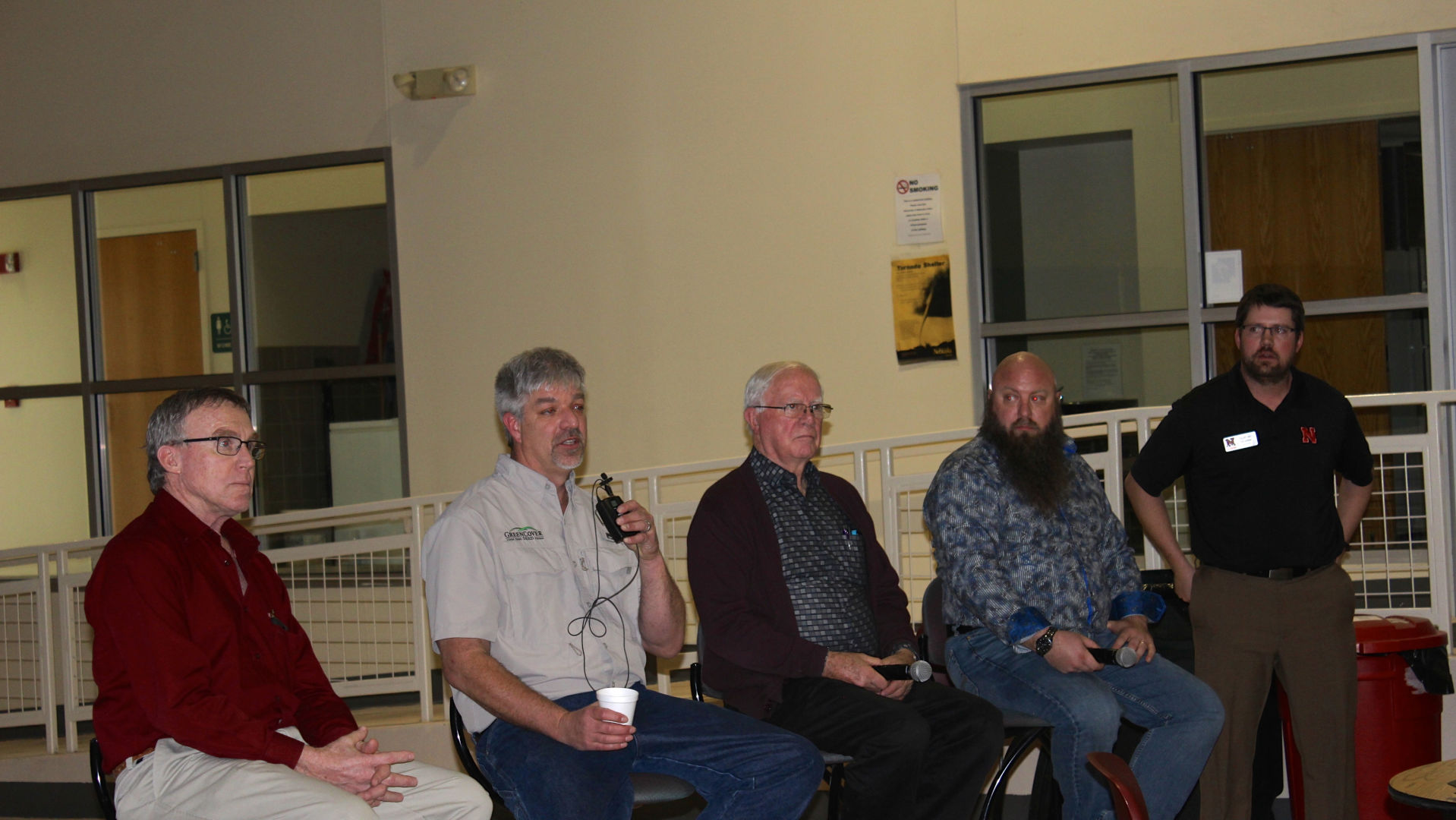Farmers across the High Plains are relearning the value of cover crops which, when used as part of an overall cropping system, are beneficial for reducing soil erosion, weed suppression and improved soil health.
An overflow crowd filled the meeting room at the University of Nebraska-Eastern Nebraska Research and Extension Center on Feb. 15 for the Nebraska Cover Crop Conference to learn the latest about this new again cropping system.
“You don’t become an expert on cover crops in two years,” said Lee Briese, an independent crop consultant from Edgely, North Dakota.
Briese pointed to other speakers on the program and the many years of no-till and cover experience they represented. Individuals interested in using cover crops will need to learn new ways of farming.
“Remember what they said, they started no-tilling 10 to 15 years ago and they have been doing cover crops for about 10 years,” Briese said. “Keep that in mind. You will need to practice and you will make mistakes. You are experts at what you have been doing but you have to learn new ways.”
Kelly Tobin from New Market, Iowa, was one of the speakers Briese was talking about. Tobin started using no-till on his farm in 1979 when he purchased a six-row John Deere conservation planter. He began planting cover crops in 2008.
“Cereal rye was our first cover crop,” Tobin said. “We tried annual ryegrass, but couldn’t successfully get it through the winter. Eventually we shifted to a mix of cereal rye, clover and radishes. This mix worked and I have now used cover crops on all of my acres every year for four years.”
In recent years Tobin said he has had very little trouble with weeds thanks to cover crops and has built up organic matter, which has improved the water holding capacity of their soil.
“Starting out our soil organic matter ranged from 1.9 percent to 2.1 percent, “ Tobin said. “Now in the areas where we have used cover crops for years the organic matter levels are measuring 3 to 4 percent. Where SOM is higher, yields are higher and we can use less nitrogen.”
Dan Gillespie, Norfolk, Nebraska, began no-till farming in 1991. Thirteen years later, Gillespie was convinced he had the best system possible. He left plenty of crop residue on the surface to collect the impact of rain drops.
“Then we ran into 2004,” Gillespie said.
His farm received 2.5 inches of rain in 20 minutes. This created ephemeral gullies across many of his fields. After another intense rain event in 2005 Gillespie decided it was time to do something different.
“The ephemeral ditches were a sign I was not doing something right,” Gillespie said. “We know now that this is not a run off problem but an infiltration problem.”
Gillespie decided to go to continuous cover crops in the areas affected by ephemeral gullies. At first he planted rye in these areas every year then planted right through the cover crop. One year he had some rye seed left over so he planted a wider area around one of ephemeral gullies in an irrigated cornfield and then planted through this cover crop. The next fall he noticed the crops in this area were greener than those in the straight no-till fields. Gillespie tried aerial application for several years but now has gone back to using a drill after the corn and the soybeans.
Now he does field-wide cover crops. This has increased water infiltration and reduced runoff by 37 percent.
“I have not worked a gully in five years,” Gillespie said.
Keith Berns, Bladen, Nebraska, said a highly-managed systems approach to cover crops and soil health is crucial to success in both the short term and the long term and it requires management.
Cover crops are easy, according to Berns, if you plant them in July or August after the harvest of wheat or peas. There is plenty of time for the cover crop to grow, abundant biomass above and below ground and ample cover crop species that fit this system.
The challenge is making cover crops work in the short planting window in the corn-soybean rotation. This is where farmers may have to change things up and try something new.
Berns suggested opening the window for cover crops as much as possible by panting shorter season corn and soybean varieties and by using the most cold tolerant cover crop species possible for your area. For example, Balansa clover is a more cold-tolerant annual clover that shows promise for more northern areas.
“Cover crops are the perfect opportunity to have great plant diversity, above and below ground, without needing specialized equipment, knowledge or markets,” Berns said.
Doug Rich can be reached at 785-749-5304 or [email protected].




